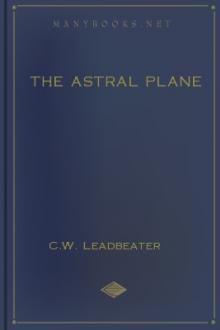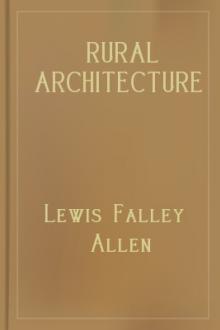Genre Literary Collections. Page - 16

And God ... divided the waters which were under the firmament from the waters which were above the firmament.... And God said, Let the waters under the heaven be gathered into one place, and let the dry land appear.... And God called the dry land Earth; and the gathering together of the waters called he Seas."
Thus beautifully did the children of men express their earliest idea of the world's distribution of land and water.
And where, on our modern maps, was this little earth, and what was it like? Did trees and flowers cover the land? Did rivers flow into the sea? Listen again to the old tradition that still rings down the ages--
"And the Lord God planted a garden eastward in Eden ... and a river went out of Eden to water the garden; and from thence it was parted, and became four heads. The name of the first is Pison ... and the name of the second river is Gihon; the name of the third river is Hiddekel (Tigris). And the fourth river is Euphrates."
[Illustration: THE GARDEN OF EDE

mendment doctrines of prior restraint, vagueness, and overbreadth. There are a number of potential entry points into the analysis, but the most logical is the spending clause jurisprudence in which the seminal case is South Dakota v. Dole, 483 U.S. 203 (1987). Dole outlines four categories of constraints on Congress's exercise of its power under the Spending Clause, but the only Dole condition disputed here is the fourth and last, i.e., whether CIPA requires libraries that receive LSTA funds or E-rate discounts to violate the constitutional rights of their patrons. As will appear, the question is not a simple one, and turns on the level of scrutiny applicable to a public library's content-based restrictions on patrons' Internet access. Whether such restrictions are subject to strict scrutiny, as plaintiffs contend, or only rational basis review, as the government contends, depends on public forum doctrine.
The government argues that, in providing Internet access, public libraries do not create a public

whose attempts were attended with success. Thinking, at that time, that it was necessary to place the sitters in a very strong light, they were all taken with their eyes closed.
Others were experimenting at the same time, among them Mr. Wolcott and Prof. Draper, and Mr. Morse, with his acustomed modesty, thinks that it would be difficult to say to whom is due the credit of the first Daguerreotype portrait. At all events, so far as my knowledge serves me, Professor Morse deserves the laurel wreath, as from him originated the first of our inumerable class of Daguerreotypists; and many of his pupils have carried the manipulation to very great perfection. In connection with this matter I will give the concluding paragraph of a private letter from the Professor to me; He says.
"If mine were the first, other experimenters soon made better results, and if there are any who dispute that I was first, I shall have no argument with them; for I was not so anxious to be the first to produce the result, as to

neralogical andpaleontological nature, and by confining the field of view almostwholly to our own continent, space has been obtained to give towhat are deemed for beginners the essentials of the science afuller treatment than perhaps is common.
It is assumed that field work will be introduced with thecommencement of the study. The common rocks are therefore brieflydescribed in the opening chapters. The drift also receives earlymention, and teachers in the northern states who begin geology inthe fall may prefer to take up the chapter on the Pleistoceneimmediately after the chapter on glaciers.
Simple diagrams have been used freely, not only because they areoften clearer than any verbal statement, but also because theyreadily lend themselves to reproduction on the blackboard by thepupil. The text will suggest others which the pupil may invent. Itis hoped that the photographic views may also be used forexercises in the class room.
The generous aid of many friends is recognized with special

months after birth, at a period of life when the nervous system is not completely developed, and it is impossible for the infant to coordinate its movements, mothers wasted several half-hours of the day "teaching baby to walk." Holding the little creature by the body, they watched the aimless movements of the tiny feet, and deluded themselves with the belief that the child was already making an effort to walk; and because it does actually by degrees begin to arch its feet and move its legs more boldly, the mother attributed its progress to her instruction. When finally the movement had been almost established--though not the equilibrium, and the resulting power to stand on the feet--mothers made use of certain straps with which they held up the baby's body, and thus made it walk on the ground with themselves; or, when they had no time to spare, they put the baby into a kind of bell-shaped basket, the broad base of which prevented it from turning over; they tied the infant into this, hanging its arms outside,

--Partners and each other--Fitting in their different games--The man to oblige--The policy of the long-handicap man--How he drove and missed in the good old days--On laying your partner a stymie--A preliminary consideration of the round--Handicapping in foursomes--A too delicate reckoning of strokes given and received--A good foursome and the excitement thereof--A caddie killed and a hole lost--A compliment to a golfer.
CHAPTER XVIII
GOLF FOR LADIES 198
As to its being a ladies' game--A sport of freedom--The lady on the links--The American lady golfer--English ladies are improving--Where they fail, and why--Good pupils--The same game as the man's--No short swings for ladies--Clubs of too light weight--Their disadvantages--A common fault with the sex--Bad backward swings--The lady who will find out for herself--Foundations of a bad style--The way to success.

of the trouble, the invalidgets "well" only to drag out a miserable existence or to get veryill again.
Although any nervous suffering is worth while if it is the means ofteaching us how to avoid nervous strain, it certainly is farpreferable to avoid the strain without the extreme pain of a nervousbreakdown.
To point out many of these pernicious habits and to suggest apractical remedy for each and all of them is the aim of this book,and for that reason common examples in various phases of every-daylife are used as illustrations.
When there is no organic trouble there can be no doubt that _defectsof character, inherited or acquired, are at the root of all nervousillness._ If this can once be generally recognized and acknowledged,especially by the sufferers themselves, we are in a fair way towardeliminating such illness entirely.
The trouble is people suffer from mortification and an unwillingnessto look their bad habits in the face. They have not learned thathumiliation can be wholeso

e failures and to "begin again," as much time is lost in thesefruitless attempts. Nothing less than !absolute integrity! is or canbe demanded of a quantitative analyst, and any disregard of thisprinciple, however slight, is as fatal to success as lack of chemicalknowledge or inaptitude in manipulation can possibly be.
NOTEBOOKS
Notebooks should contain, beside the record of observations,descriptive notes. All records of weights should be placed upon theright-hand page, while that on the left is reserved for the notes,calculations of factors, or the amount of reagents required.
The neat and systematic arrangement of the records of analyses isof the first importance, and is an evidence of careful work and anexcellent credential. Of two notebooks in which the results may be,in fact, of equal value as legal evidence, that one which is neatlyarranged will carry with it greater weight.
All records should be dated, and all observations should be recordedat once in the notebook. The making of

ir background the physical world we live in and all its familiar accessories. Life on the sixth division is simply our ordinary life on this earth, minus the physical body and its necessities; while as it ascends through the fifth and fourth divisions it becomes less and less material, and is more and more withdrawn from our lower world and its interests.
The scenery of these lower divisions, then, is that of the earth as we know it: but it is also very much more; for when looked at from this different standpoint, with the assistance of the astral senses, even purely physical objects present a very different appearance. As has already been mentioned, they are seen by one whose eyes are fully opened, not as usual from one point of view, but from all sides at once--an idea in itself sufficiently confusing; and when we add to this that every particle in the interior of a solid body is as fully and clearly visible as those on the outside, it will be comprehended that under such conditions even the most fam

d will answer his purposes.
The plans and directions submitted in this work are intended to be of the most practical kind; plain, substantial, and applicable, throughout, to the purposes intended, and such as are within the reach--each in their kind--of every farmer in our country. These plans are chiefly original; that is, they are not copied from any in the books, or from any structures with which the writer is familiar. Yet they will doubtless, on examination, be found in several cases to resemble buildings, both in outward appearance and interior arrangement, with which numerous readers may be acquainted. The object, in addition to our own designs, has been to apply practical hints, gathered from other structures in use, which have seemed appropriate for a work of the limited extent here offered, and that may serve to improve the taste of all such as, in building useful structures, desire to embellish their farms and estates in an agreeable style of home architecture, at once pleasant to the eye, a